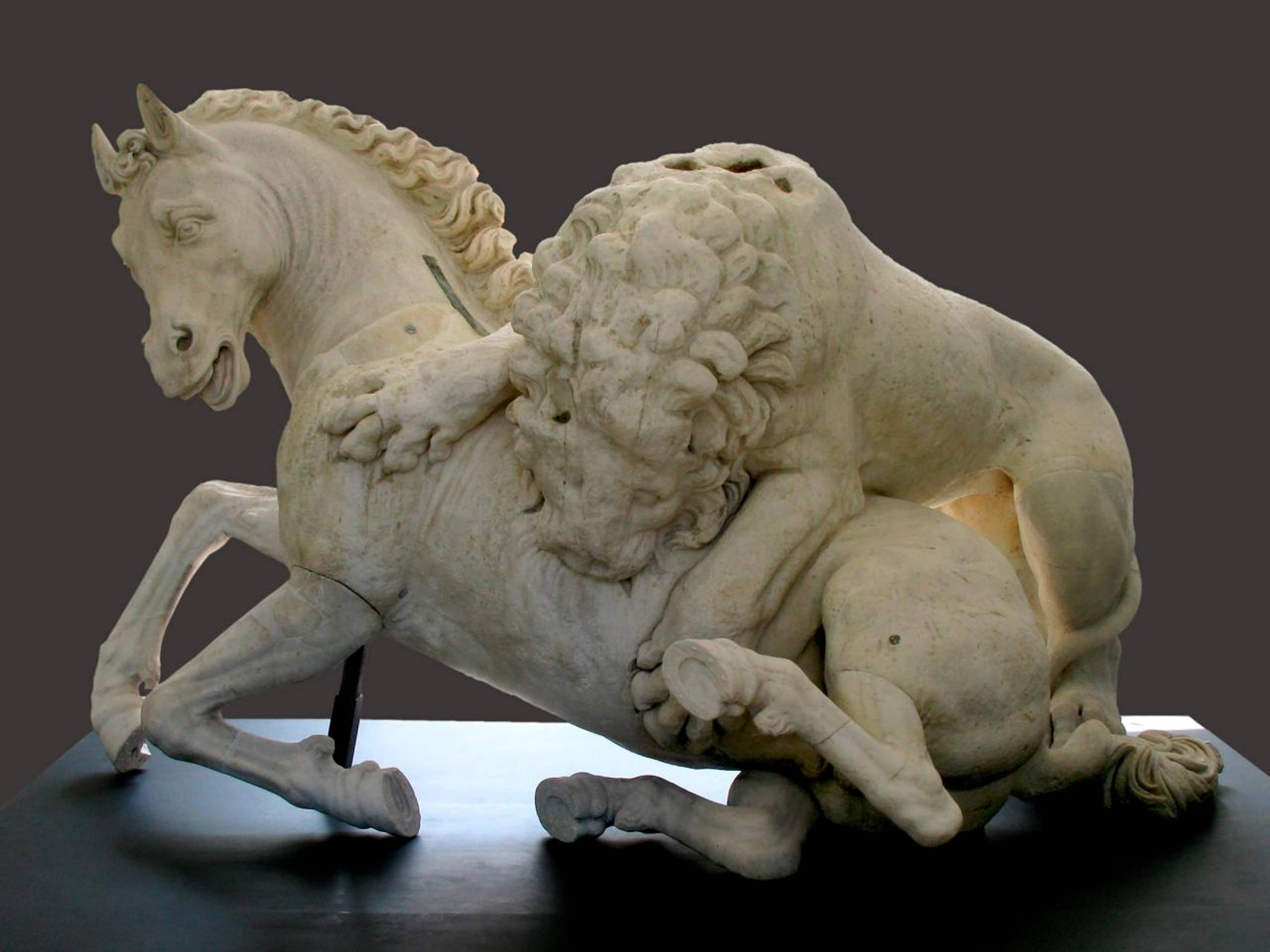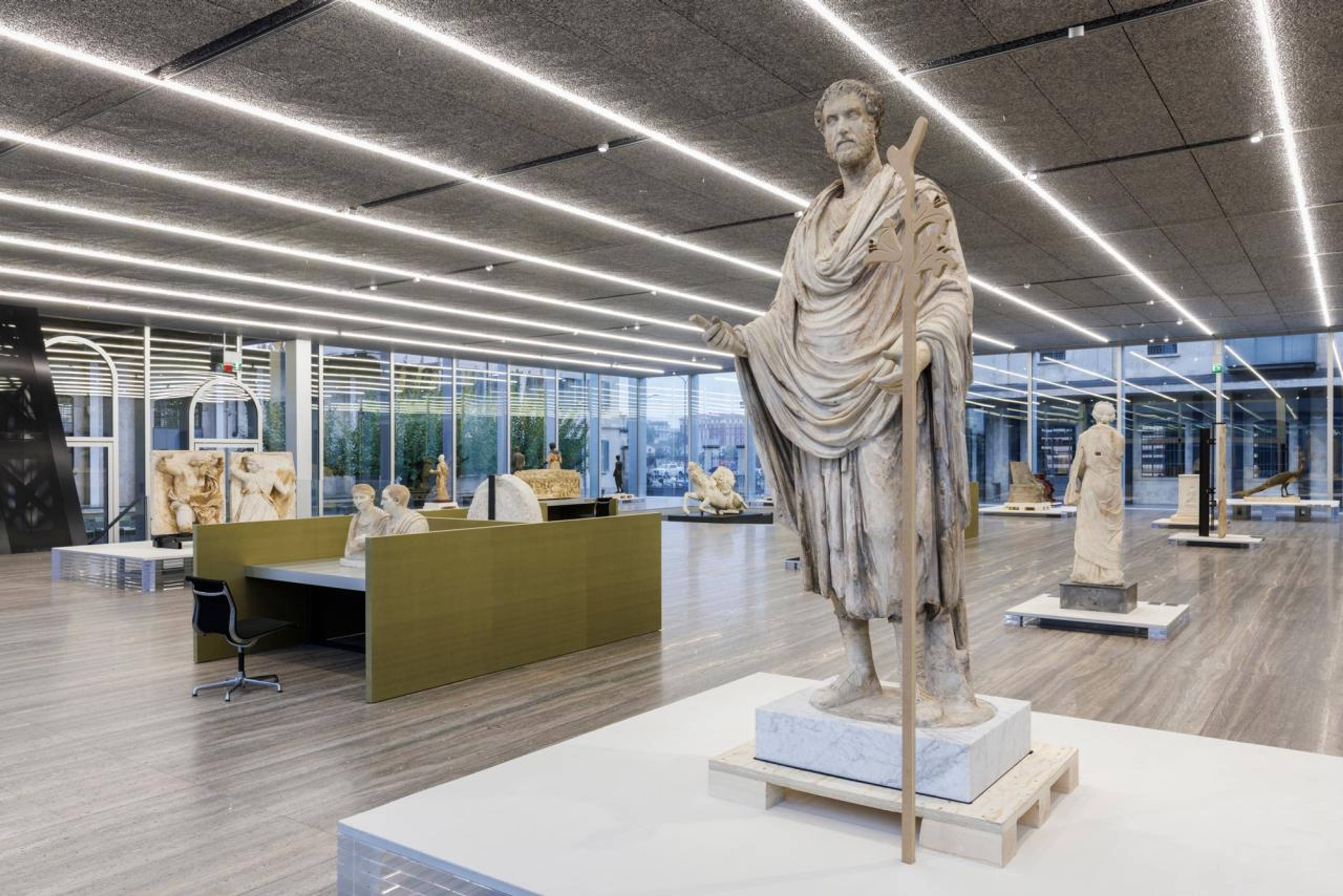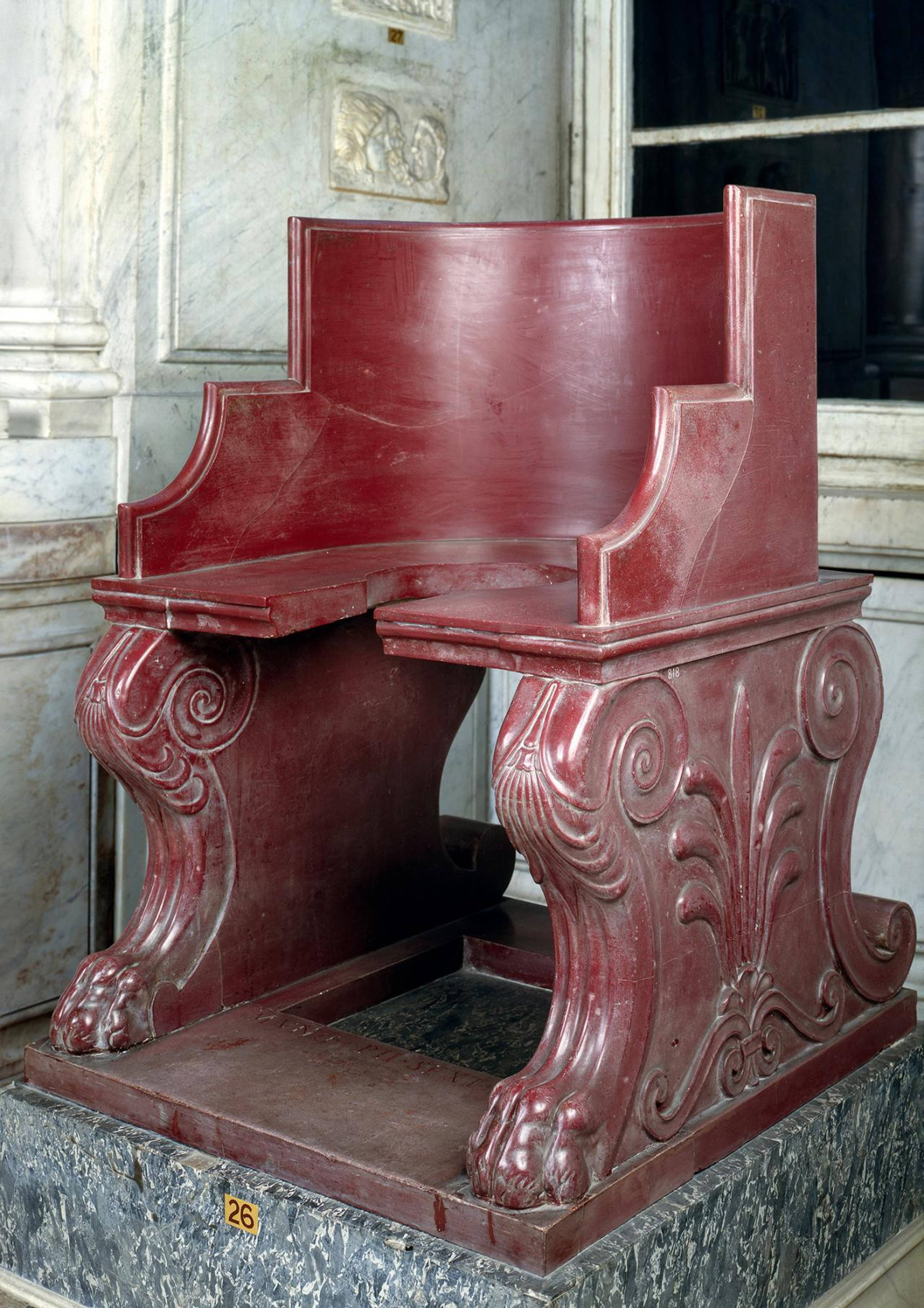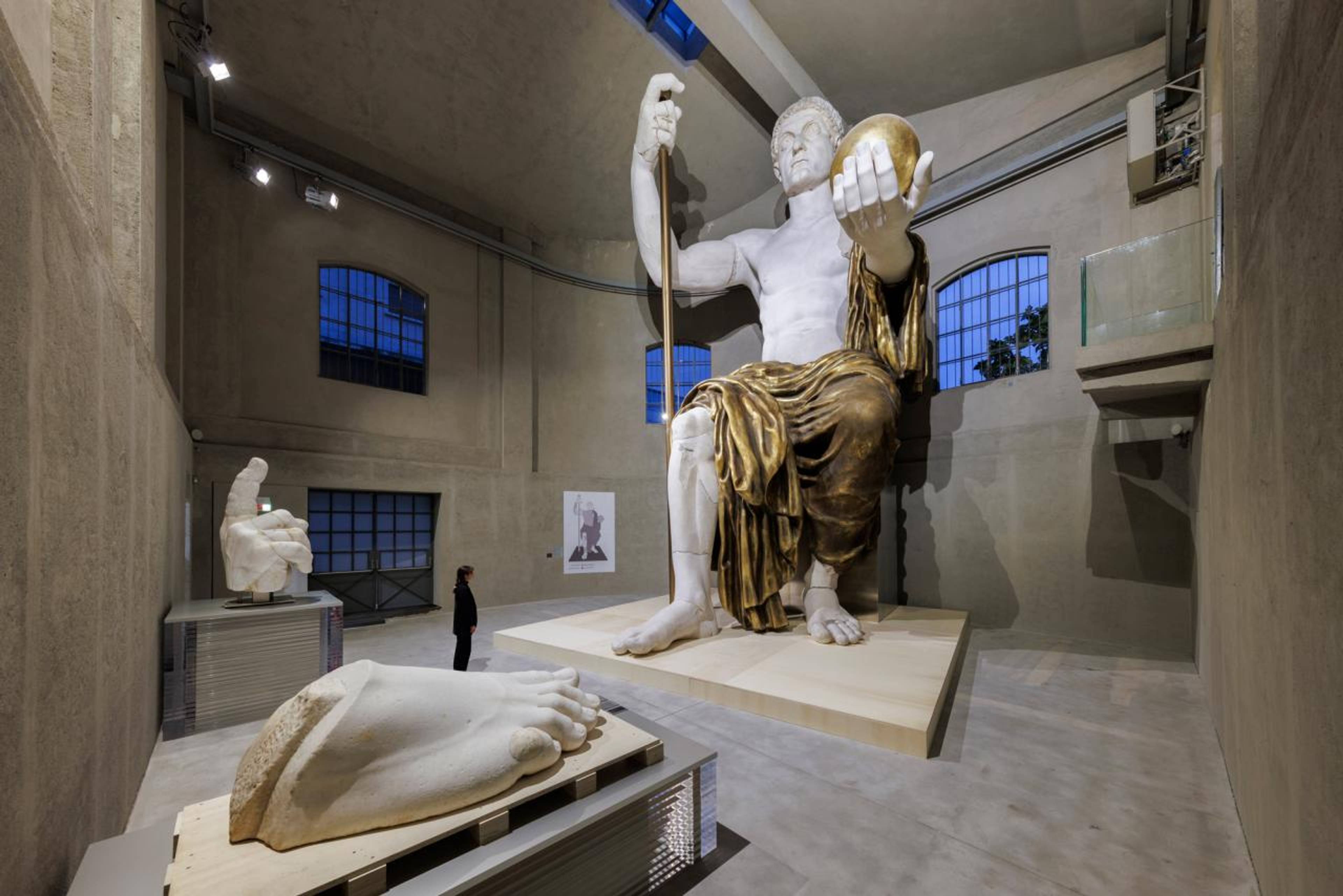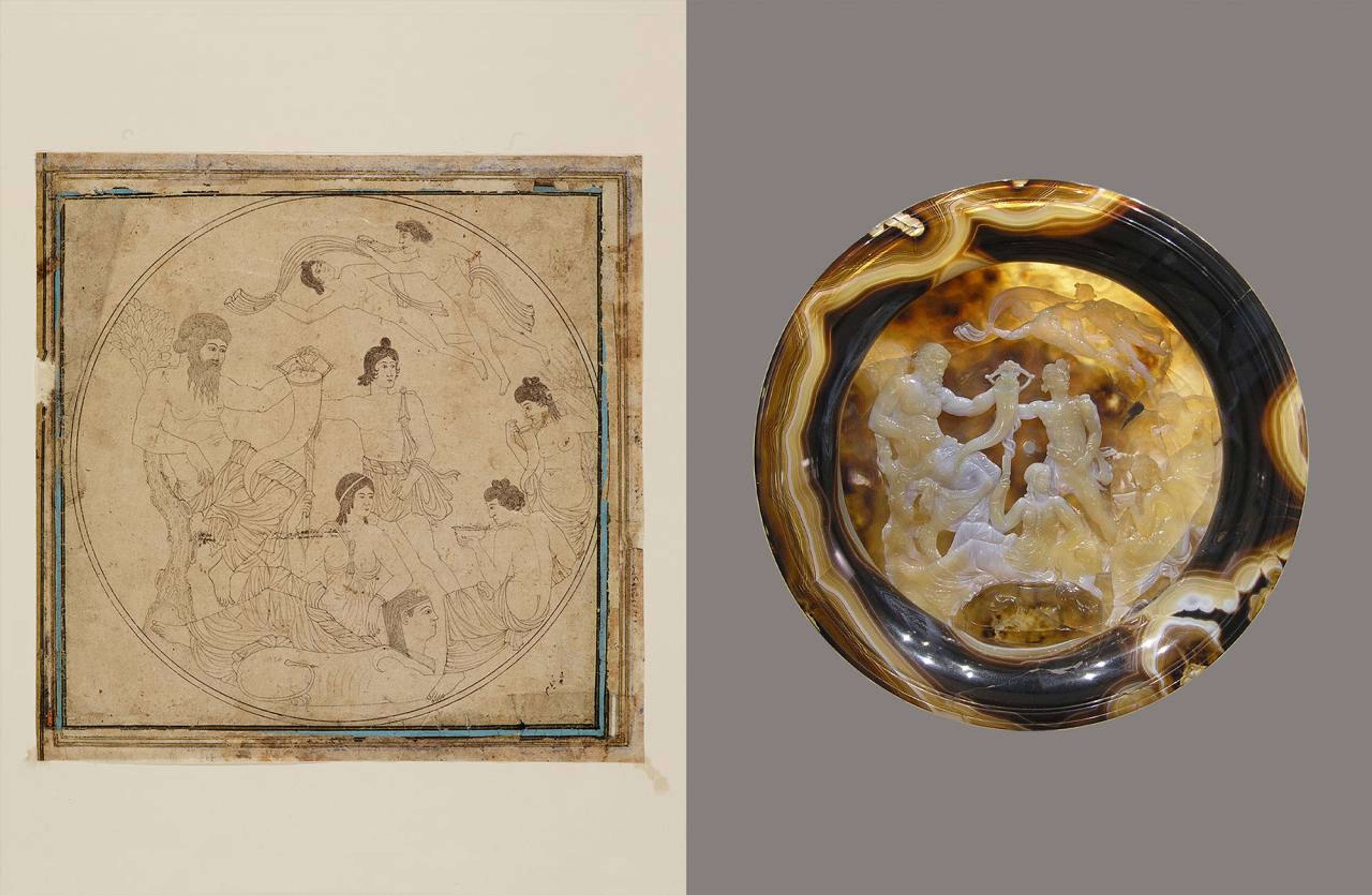“A girl who has put her head on straight,” Salvatore Settis calls the statue of Saint Iphigenia, one of the many artifacts that populate “Recycling Beauty.” The exhibition is the third episode in a series he began curating in 2015 that re-presents Classical art to reflect on contemporary issues, such as the aesthetics of reusing materials and objects, cultural appropriation, and the problematization of the notion of history as linear and progressive. The statue perfectly crystallizes the nature of the exhibition – or rather embeds it. In 1501, a marble head made by an unknown sculptor was added to an ancient body (dating to the 1st century CE), together with an inscription identifying her as Saint Iphigenia, “the first Christian virgin.” Subsequently removed from the church of Santa Corona in Vicenza because it was considered to be too pagan, the assembled sculptural body was dismembered and dispersed in 1854. Its appearance here marks the first time it has been put back together in nearly 170 years.
This is not an isolated case in the context of the show, but the very practice that it purports to examine: the reuse of fragments from the art of antiquity in work produced during the High Middle Ages through the Baroque era. Presenting a constellation of smaller narratives that move within the broad and ever-changing frame of capital-H History, not only does the project attest to the existence of ripples in the historical timeline; it also shows how the practice of reuse can conceal, within a single work, the co-presence of different temporalities. The Moro Borghese (Borghese Moor) and La Zingarella (The Gipsy Girl), for instance, composed by Nicolas Cordier for Scipione Borghese between 1607 and 1612, arise from an exquisitely Baroque practice of assembling and reworking remnants of different eras.
View of “Recycling Beauty,” Fondazione Prada, Milan, 2022
One of the nuclei of “Recycling Beauty” accounts for temporal twists that are difficult to decipher, as demonstrated by cases of false historical attribution that are showed in the exhibition, some of which even discovered during preparations. Foremost among these is a sculpture of the Trojan prince Paris that once sat on a spire of the Milan Duomo, long considered an ancient copy of a work by the Greek Polyclitus but now dated to the 16th century. A constant dialectic between preservation and destruction is likewise evident in polychrome marble slabs made in the Cosmatesque style, which developed from the 13th century onward. The practice, which owes its name to Cosmas, the exponent of a well-known family of Roman marmorari (marble workers), entailed the shattering of Roman spolia (literally “spoils”) to give rise to new, abstract, geometric beauty that nevertheless safeguarded the prestige attributed to semiprecious stones.
In the face of a semantics that is not stable, due to the circulation of these, the permanence of certain motifs ensures their recognizability: they were selected throughout history because they were aesthetically useful, even when their origins were in sometimes diametrically opposed symbolic contexts. Such a paradox is manifest in the red marble seat recovered from the age of the emperor Hadrian (117–138 CE): originally used as a latrine, it was later employed during papal inaugural ceremonies because it was incorrectly believed to be made of porphyry, a rare stone that symbolized power in imperial Rome, and the hole in the seat was believed to be used to ascertain the sex of the new pope.
Latrine seat, 117–138 CE, red marble
The display strategy of “Recycling Beauty” is conceived to stimulate two types of attention in the audience. The Foundation’s “Podium” building induces reflexive focusing, making seating stations available for a careful examination of the exhibited objects. A workshop aesthetic dominates this section, populated by acrylic plinths – partly derived from previous exhibitions – that evoke a transitory state. The works are propped up as if they were in storage, ready to be moved again in a short time to their respective destinations, possibly far apart geographically and culturally.
The “Cisterna” building, meanwhile, emerges as a place of wonder and activated curiosity. The space, usable at different heights thanks to its balconies, displays the original right hand and right foot of The Colossus of Constantine (312 CE), as well as a complete, one-to-one-scale reconstruction of the monument. In the words of Rem Koolhaas – who designed the installation on behalf of OMA, together with the architect Giulio Margheri – it represents absolute artificiality, a spectacle almost Disney-like in its appearance.
From left to right: Right hand and foot of the Colossus of Constantine, 312 CE and Reconstruction of the Colossus of Constantine, 2022. Installation view, Fondazione Prada, Milan, 2022
Settis also points out how the exhibition conceals a less pacified aspect of history: the recycling of fragments of ancient art in modernity entails at its margin a “museification of destruction” that bears witness to war, plundering, and speculation. One destroys to create beauty: in the Benjaminian terms cited by the curator, every document of civilization is also a testament to its barbarism. Perhaps this crucial trait remains obscured precisely by the recovery of an extraordinary volume of beauty, absolutely pacified in a quiet and orderly display.
Left: Drawing after the Farnese Cup, c. 1400–50, carbon ink on paper; right: Farnese Cup, 2nd–1st century BCE, sardonyx agate cameo
___
“Recycling Beauty”
Fondazione Prada
17 Nov 2022 – 27 Feb 2023


